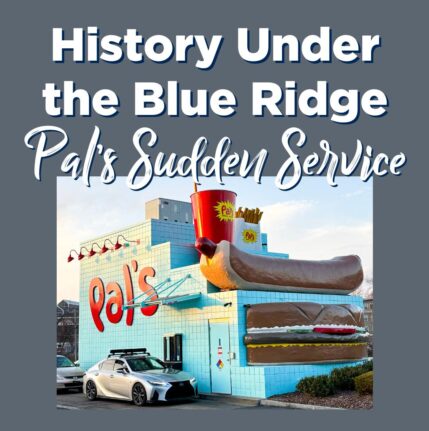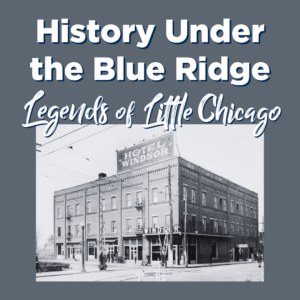Thanks to Zachary Harris, your Library’s local history and genealogy specialist, for sharing the story of Johnson City’s beloved fast food chain, Pal’s Sudden Service. In our “History Under the Blue Ridge” series, Zachary highlights intriguing stories he finds during his work in the Tennessee Room.
One of the most iconic sights in the Tri-Cities is the teal blue tile and comically large fast food sculptures of a Pal’s Sudden Service. If you’ve spent your life in this region, it’s easy to take Pal’s restaurants for granted. But Pal’s is one of the first stops people want to make when visiting me in East Tennessee.
Recently in my work in the Library’s Tennessee Room, I came across the book Lost Restaurants of the Tri-Cities, Tennessee. It includes the history and evolution of Pal’s and its founder, Pal Barger.
According to the book, Barger’s restaurant company was the first to receive the Malcolm Baldrige National Quality Award from the National Institute of Standards and Technology. This award is one of the most prestigious recognitions given to businesses who attain a nationally recognized level of performance.
Finding this got me wondering: how did Pal’s get to this point? Where did its unique and ubiquitous design come from? And why hasn’t it expanded across the country?
Pal Barger’s childhood made him no stranger to food service. His parents, Fred and Helen Barger, ran Skoby’s Drive-In in Kingsport, Tennessee. He was given the nickname “Pal” at around three years old, when he began going to his father’s city basketball league games in Kingsport and became the team’s mascot, “Pal.”
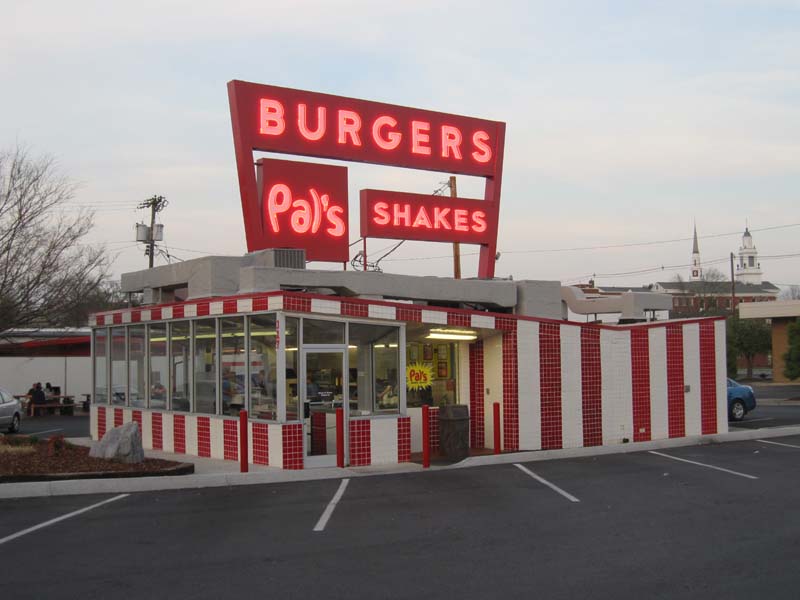
Pal opened his own restaurant, the first Pal’s Sudden Service, in Kingsport in 1956. It was a quick success, and in 1958 another location popped up on Lynn Garden Drive in Kingsport. While these first two locations did embrace unique exterior designs, the distinct novelty food sculptures we know today were not yet the norm for Pal’s.
Pal Barger recounted the restaurant’s early success in a 2019 interview with WJHL, crediting its success to the simplicity of quality food and the streamlined production process. These two factors are what make the “sudden” in Sudden Service possible.
Barger’s commitment to simplicity in service contrasts with the outlandish facade designs that have also always set Pal’s apart from its competitors. The loud circus-like stripes of the 1956 location and the larger-than-life statue of a Pal’s employee at the 1958 location were just the beginning.
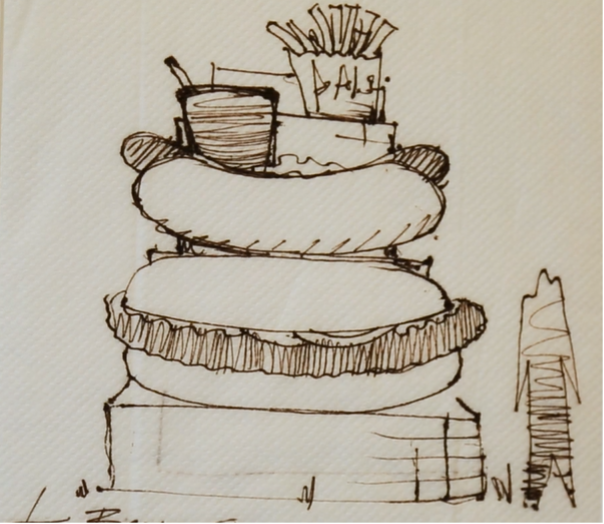
The modern Pal’s design is distinctive: the giant statues of a hotdog, hamburger, fries, and drink on top of a teal patchwork of tiles are hard to miss. Barger got the inspiration for the iconic design from artist Tony Barone, who reportedly sketched it on a napkin during a conversation at Skoby’s.
These iconic fiberglass sculptures, which are produced by a manufacturer in Elizabethton, now adorn 30 locations in and around the Tri-Cities.
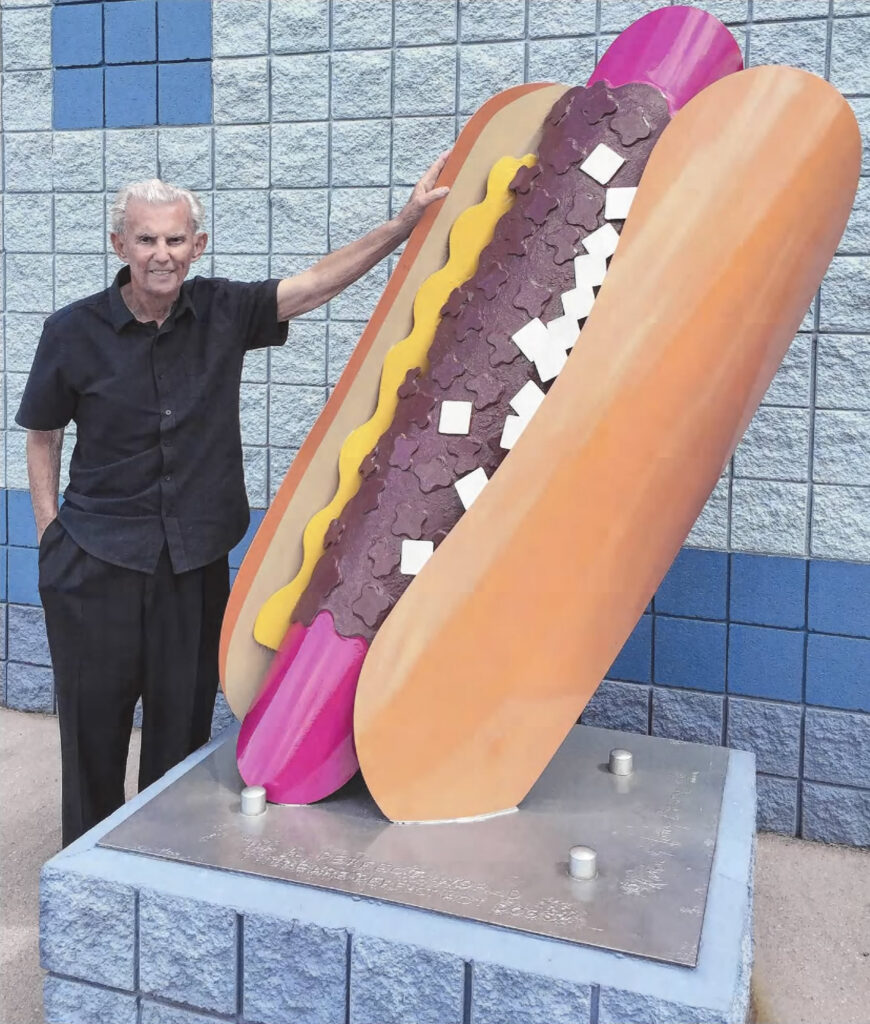
Since 1956, Pal’s Sudden Service has not expanded far from its founding location; it hasn’t stretched much farther west than Morristown, Tennessee or farther east than Abingdon, Virginia. Barger supposedly chose new locations based on whether it was possible for him to drive to multiple restaurants for surprise inspections in a single day.
Barger died in 2020 at the age of 90. Since then, the reach of Pal’s Sudden Service has continued to slowly expand in East Tennessee and Southwest Virginia. Close to 70 years after its first location opened in Kingsport, Pal’s remains a favorite of locals and visitors to this day.
Much of this history was found in the Tennessee Room and in the Library’s new digital Johnson City Press archive, which dates back to 1934. This archive is available courtesy of Ancestry and Newspapers.com, and can be accessed through the Library’s wifi on our public computers or on your personal device.
More News
